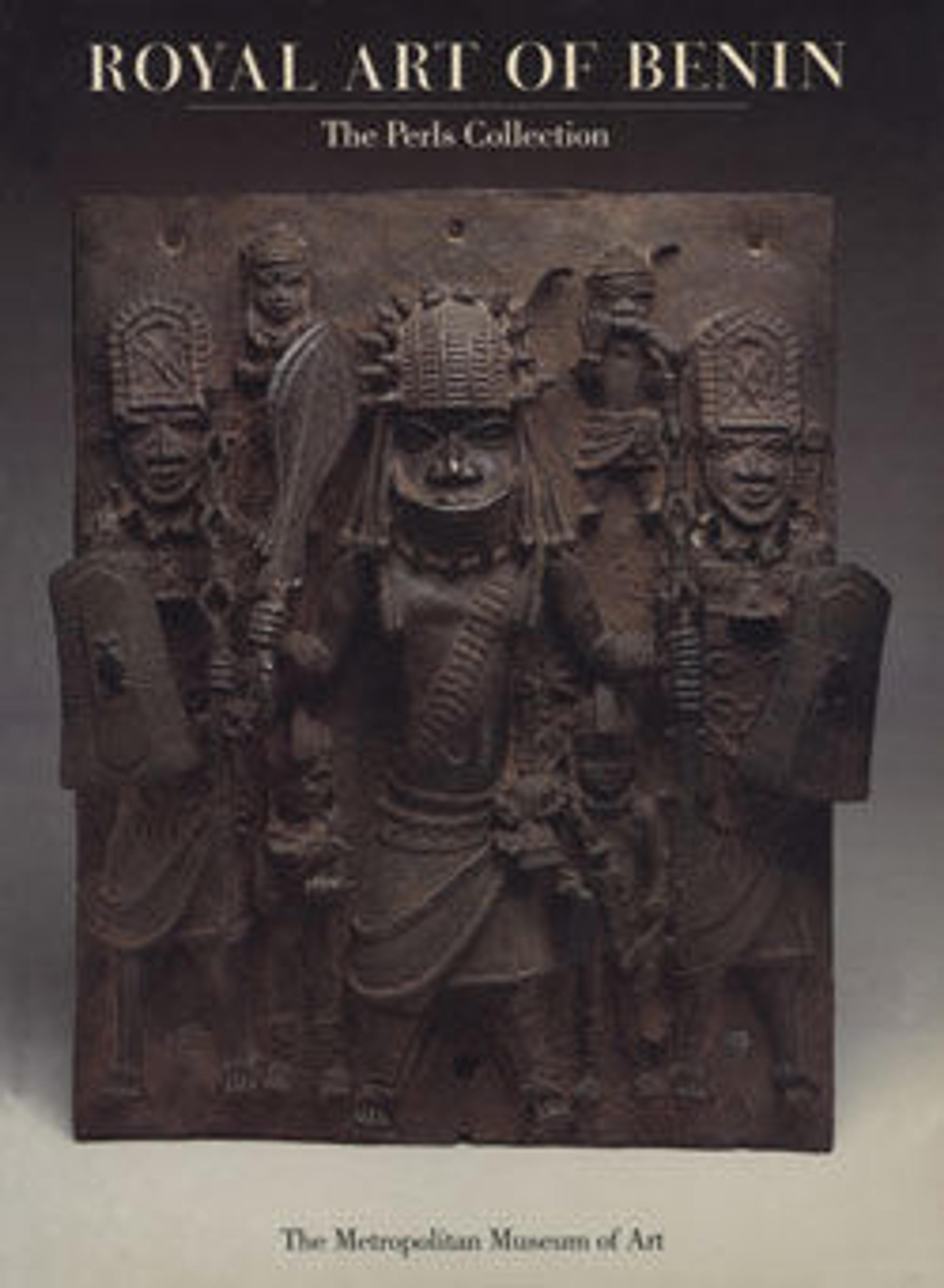Leopard Aquamanile
This aquamanile depicts a leopard crouching, a posture that signifies his readiness to pounce. This example is unusual in that its head is detachable, allowing the vessel to be filled with water through the opening in the neck, which is decorated with a collar of coral beads. The liquid flows through an open space between the leopard's front teeth.
The leopard is the most common form of zoomorphic aquamanile made in Benin. Coined "king of the bush," it is one of the principal symbols of the Oba in Benin art, expressing his ferocious, aggressive nature. It is particularly associated the Oba Ewuare the Great, the legendary source of brass vessels in Benin.
The leopard is the most common form of zoomorphic aquamanile made in Benin. Coined "king of the bush," it is one of the principal symbols of the Oba in Benin art, expressing his ferocious, aggressive nature. It is particularly associated the Oba Ewuare the Great, the legendary source of brass vessels in Benin.
Artwork Details
- Title:Leopard Aquamanile
- Artist:Edo artist
- Date:16th–19th century
- Geography:Nigeria, Court of Benin
- Culture:Edo
- Medium:Brass
- Dimensions:H. 5 3/4 × W. 2 5/8 × D. 7 3/4 in. (14.6 × 6.7 × 19.7 cm)
- Classification:Metal-Containers
- Credit Line:Gift of Mr. and Mrs. Klaus G. Perls, 1991
- Object Number:1991.17.58a, b
- Curatorial Department: The Michael C. Rockefeller Wing
More Artwork
Research Resources
The Met provides unparalleled resources for research and welcomes an international community of students and scholars. The Met's Open Access API is where creators and researchers can connect to the The Met collection. Open Access data and public domain images are available for unrestricted commercial and noncommercial use without permission or fee.
To request images under copyright and other restrictions, please use this Image Request form.
Feedback
We continue to research and examine historical and cultural context for objects in The Met collection. If you have comments or questions about this object record, please contact us using the form below. The Museum looks forward to receiving your comments.
